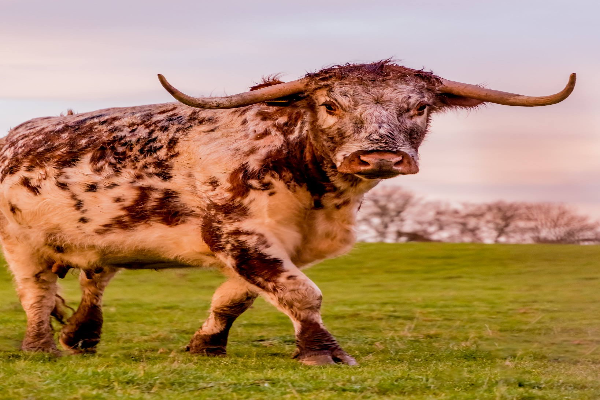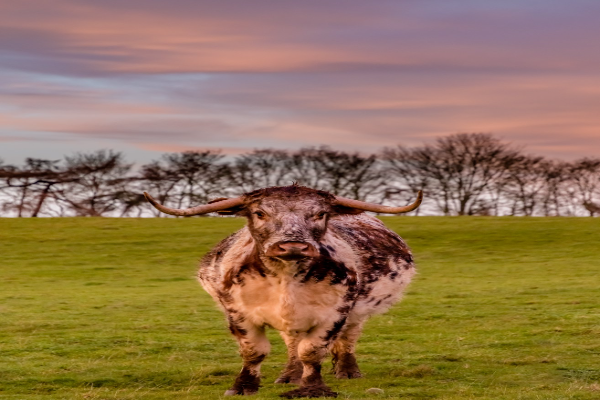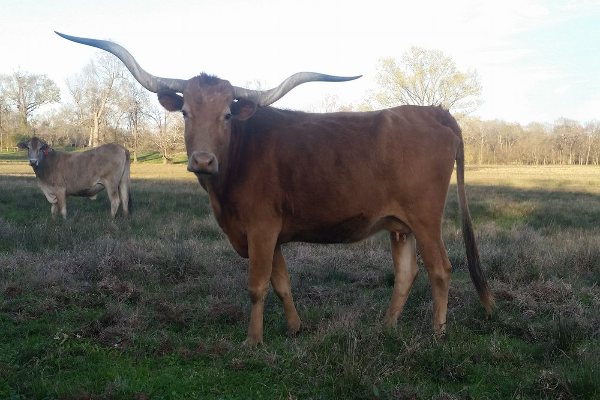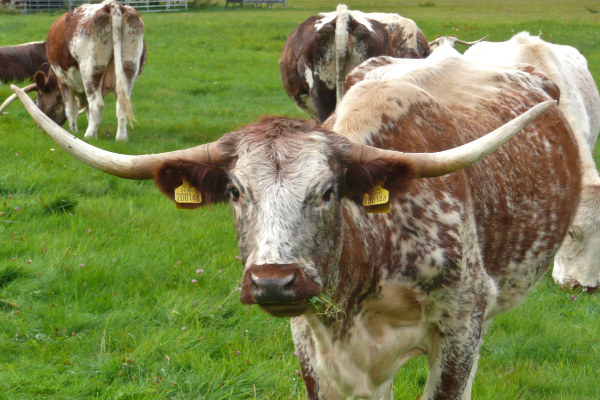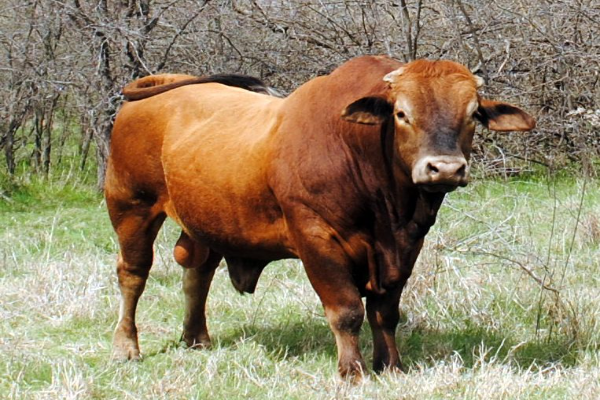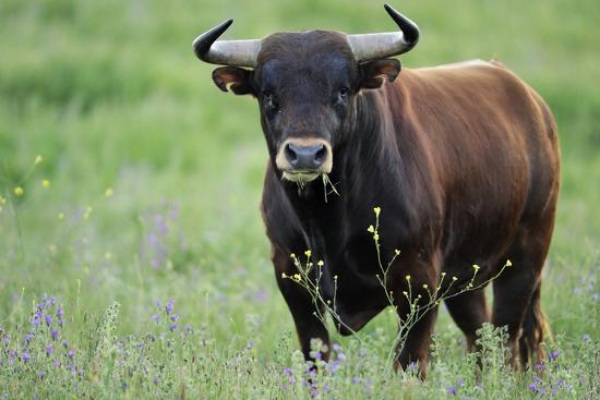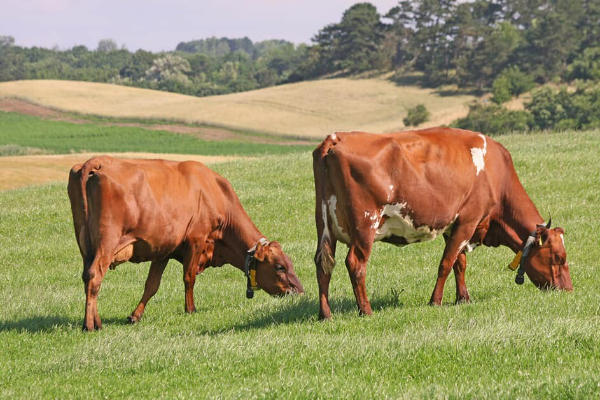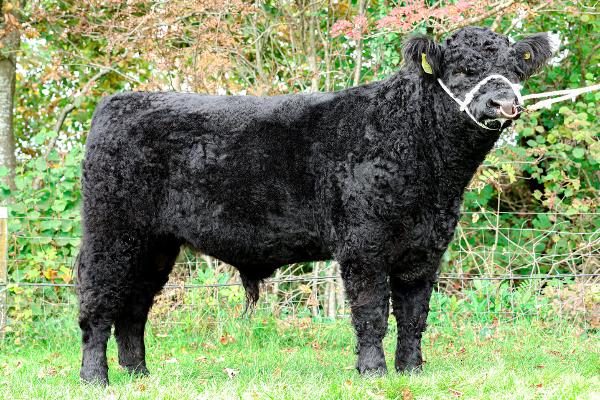English Longhorn Cattle
What Is The History Of English Longhorn Cattle?
English Longhorn cattle (also formerly known as Lancashire cattle) are a long-horned brown and white breed of beef cattle originating from Craven, in the north of England. The breed was initially used as a draught animal, which its body is well suited for; the milk was also collected for butter and cheese because of its high butterfat content. The notable long, curved horns that serve to distinguish this breed from others can make an individual appear aggressive, although by temperament they are usually friendly.
Longhorns live surprisingly longer than other breeds of cattle and are also known for calving with ease. They have a white patch along the line of their spine and under their bellies. They are not to be confused with the Texas Longhorn breed, which is also often called "Longhorn cattle" or "Longhorns". The creamy white horns were treasured by manufacturers of buttons, cups, cutlery, and lamps. Fine slivers of clear horns were a poor mans' glass and many a household were grateful for the end product of these elegant longhorns.
The most usual method of cattle keeping in those early times would have been one or more animals belonging to an individual, kept on common grazing, which was served by a bull owned by the Lord of the Manor. It was all a most haphazard and unsatisfactory method. There was no possibility of an organized breeding program being carried out. The peasant farmers had to put up with what the Lord provided. As a result, cattle were long in the leg, narrow-bodied and coarse, ideally designed for the plough.
Robert Bakewell (1725-1795), a man who was a revolutionary in the field of interbreeding became devoted to one aim - improving livestock to provide meat for the masses of people who went to work in towns in the Industrial Revolution. He took horned heifers and crossed them with a Westmoreland bull to create the Dishley Longhorn, now called the English Longhorn. Through this new and careful selection of cattle, he improved the size and quality (specifically its quick growth and heavy hindquarters) of this breed which became widely produced throughout England and Ireland until it was surpassed by the Shorthorn in the 1800s.
The total population of the English Longhorn cattle declined rapidly for nearly 200 years until the breed was rescued by the RBST (Rare Breeds Survival Trust). And the efforts of RBST resulted in 255 registered animals in 1980. In 1981 a pair of Longhorns won the much-coveted 'Burke Trophy' in the Interbreed Cattle Championship of The Royal Show, and a Longhorn bull was Reserve Interbreed Beef Champion at the Royal Welsh Show in 1994.
In 1999 a Longhorn took the Interbreed Native Championship in the Leicester Show and a Longhorn pair were Reserve native Interbreed at the Counties Show. Currently, the English Longhorn cattle are available in the United Kingdom, Germany, Ireland, and New Zealand.
What Are The Characteristics Of English Longhorn Cattle?
- English Longhorns are large lean beef cattle with an impressive sweep of horns that curve down to around the nose. These impressive horns are valued in the pedigree.
- The body may be any one of a wide range of brindle colors (including colors from red to grey) but they all have the characteristic white line or "finching" along the back and down the tail, which is passed onto their cross-bred progeny.
- English Longhorn is renowned for its ease of calving.
- • Prominent hook bones, deep pins, and a roomy birth canal result in almost no recorded incidence of assistance being needed at birth.
- Longhorns have excellent milking ability and their long and level lactation help avoid a flush of milk at calving. They rear their calves very well. A 6% butter fat is not uncommon although no-one is currently milking them commercially.
- The Longhorn was renowned for the high butterfat of its milk which, in days gone by, was used in the making of famous cheeses like Stilton and Red Leicester.
- They are excellent mothers and their docile nature makes them an easy breed to manage.
- Their longevity and relatively low body weight make them very economical and inexpensive to feed.
- Currently, they are raised mainly for meat production, and they produce very good quality meat.
- Unlike many rival breeds, which require the laying down of excessive amounts of external fat before the formation of intramuscular fat can take place, a properly finished Longhorn carcass will benefit from “marbling” without such excess external fat cover.
- Texas longhorns reach maximum weight in less than 10 years and produce exceptionally lean meat.
- Longhorn beef has less cholesterol than a skinless chicken breast.
- Even with empty barns to shelter in, they will often prefer to lie up in woods or hollows in bad weather, and they come through the winter in remarkably good health.
What Is The Difference Between English Longhorn and Texas Longhorn?
Texas Longhorn English Longhorn
The English Longhorn is sometimes confused with that of the Texas Longhorn as they are both referred to as Longhorn. There are differences that distinguish the two breeds.
The differences lie mainly in the shape of their horns. The English Longhorn, horns grow downwards and tend to curve towards their faces whilst the Texas Longhorn grow up and into more lyre-shaped horns.
The English Longhorn cattle have a more standard coloring and patterning than that of the varied colors of the Texas Longhorn cattle breed.
A longhorn heifer breeds well into her teens, twice as long as other beef cattle breeds. They eat a broader range of vegetation than other cattle, enabling breeders and ranchers to spend less money on herbicides and field maintenance.
What Is The Weight Of English Longhorn Cattle?
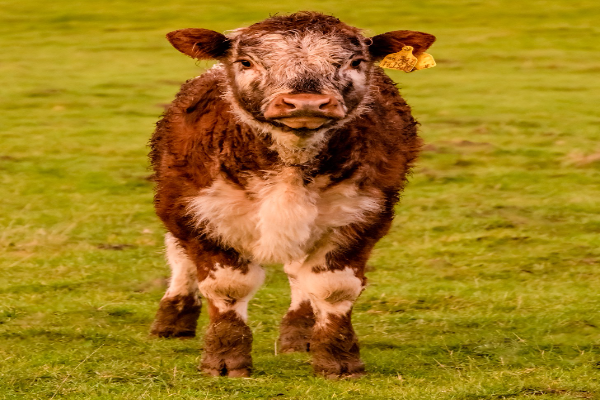
Cows range in height from 130 to 140 cm and weigh 500 to 600 kg. Males average 150 cm in height and 1000 kg in weight.
References
en.wikipedia.org
roysfarm.com
thecattlesite.com
animals.mom.com
afs.okstate.edu
domesticanimalbreeds.com
knepp.co.uk

Written by
Murat KANAT
Veteriner HekimBreedsMore
IllnessesMore
Forage cropsMore
![]() Патологическая физиология голодания Arina TARAN
Патологическая физиология голодания Arina TARAN![]() Дефицит фосфора (гипофосфатемия) Hipofosfatemi Arina TARAN
Дефицит фосфора (гипофосфатемия) Hipofosfatemi Arina TARAN![]() Какие бывают кормораздатчики для ферм КРС? Irina Makarova
Какие бывают кормораздатчики для ферм КРС? Irina Makarova![]() Кормушки для овец Diana Myakisheva
Кормушки для овец Diana Myakisheva![]() Питание домашних коз: что едят, виды корма и правила кормления Alina Arslantürk
Питание домашних коз: что едят, виды корма и правила кормления Alina Arslantürk![]() Важность минералов питании сельскохозяйственных животных Irina Makarova
Важность минералов питании сельскохозяйственных животных Irina Makarova

